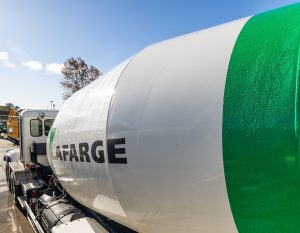A newly released study indicates the infrastructure deficit in rural municipalities in Alberta is growing and assets such as bridges, culverts, roads, and water, wastewater and stormwater utilities will continue to deteriorate unless the provincial government pumps more money into the pot.
The study is the final one of four produced over the past several months by the Rural Municipalities of Alberta (RMA) in conjunction with Tantus Solutions Group.
The bottom line?
The overall rural municipal infrastructure deficit in Alberta is presently $17.25 billion and is expected to grow to $40.71 billon in 2028 based on current provincial funding available for rural projects.
According to the authors, “While the current condition of infrastructure observed in this study raises immediate concerns regarding the reliability, resiliency and safety of core transportation and utility systems, the incorporated forecasts point to an even more concerning potentiality.
“An infrastructure portfolio already showing signs of underinvestment is particularly vulnerable to risks and has likely already begun deteriorating quickly. Without adequate intervention this deterioration will impact not only resident quality of life, but also economic potential.”
The purpose of the research was to provide and up-to-date understanding of the true state of municipal infrastructure and obtain information for data-driven advocacy efforts of the RMA. The research has given the RMA insights into patterns, trends and other important findings related to the municipal infrastructure deficit and an understanding of how to best support asset management efforts.
The study notes when the results of the earlier reports are put together, they reveal an “alarming” deficit figure.
For example, the cost to bring assets up to snuff in 2024 will rise to $23.46 billion, in 2025 it goes to $28.83 billion, in 2026 it goes to $33.5 billion, in 2027 ir rises to $37.45 billion, and in 2028 it will reach the $40.71-billion mark.
The present deficit for bridges and culverts is $2.29 billion, $11.99 billion for roads and $2.96 billion for utilities.
“If Alberta continues with the same level of provincial funding, 2028 will see a dramatically decreased infrastructure portfolio condition rating,” the report warns. “Such a decline in condition places serious risk to the viability, resiliency and safety of core municipal infrastructure.”
The report states infrastructure failures are likely to increase in both frequency and severity based on the conditions of the assets.
Because infrastructure does not deteriorate in a linear fashion, a deterioration curve model was used to estimate the condition and useful life of the existing infrastructure and bring the assets to a target state. The graph shows the overall state of infrastructure is well below the target condition level.
Additionally, all three asset types currently site on an expensive point of the curve in the model, which means there is more risk to usability, safety and reliability of the network.
The holding cost, or investment needed, just to maintain the infrastructure at the same condition level from one year to the next to offset the natural aging and deterioration of assets, is more than $6.41 billion per year. Any investment level below that will result in even further deterioration of the portfolio.
The report lays out a number of recommendations such as increasing financial support, providing grant programs and introducing innovation funding to support new technology and construction techniques.
Provincially, the authors recommend the Government of Alberta provide funding to address the deficit and support critical infrastructure for economic prosperity, introduce funding to support new technology and construction techniques and develop an asset data reporting program.
For rural municipalities, the report suggests they should collaborate on opportunities with their neighbours to share infrastructure data, jointly develop asset management programs and conduct joint infrastructure planning.
Meanwhile, RMA members should conduct climate change resiliency planning for core infrastructure to assess what assets are most prone to failure, loss of function or outright damage from climate-related events.
“This will help ensure that utility and transportation networks are viable, and plans are in place in the event of disruption,” the report authors state. “It will also highlight which assets may require investment earlier in their normal-functional expected life due to climate-related risks, or where construction changes will be required during replacement to incorporate greater resiliency.”
Meanwhile, the report says, the RMA should also promote asset management supports and education programming for members, develop an asset data collection program and continue its advocacy on infrastructure issues.











Recent Comments